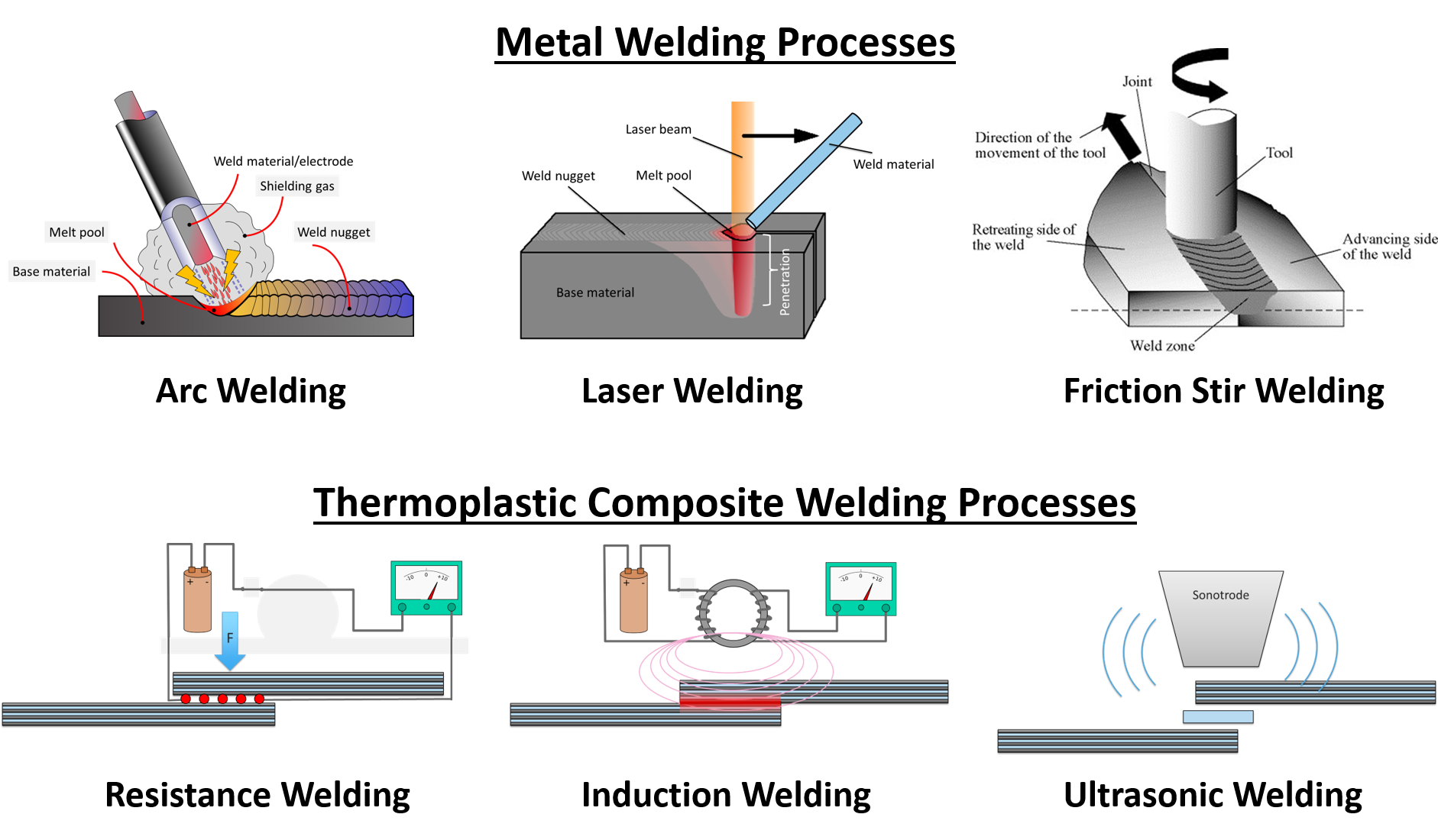7.3.5 Main Takeaways on Bonded and Welded Joints
Course subject(s)
Module 7. Joining of Structures and Manufacturing
Welding
Welding can be defined as the act of fusing two parts together through the application of heat and/or mechanical force to cause the materials being joined to flow into one another.
Not all materials can be welded, as the process involves melting of the material which can have very negative consequences on the material properties. However, there are many metal alloys and thermoplastic composite materials that can be welded (thermoset composites are not weldable).
We also examined the more common welding techniques for metals and composites. They are:

Adhesive Bonding
We also examined the joining process of adhesive bonding, which is the same as glueing. This process relies on the chemical bonding of an adhesive material to the parts being joined, and we saw that there are three distinct failure modes possible in such a connection: adherend failure, cohesive failure, and adhesion failure.
The sensitivity of the chemical bonds in the adhesive to variations in the process present a major challenge in the certification of bonded joints.

Introduction to Aerospace Structures and Materials by TU Delft OpenCourseWare is licensed under a Creative Commons Attribution-NonCommercial-ShareAlike 4.0 International License.
Based on a work at https://online-learning.tudelft.nl/courses/introduction-to-aerospace-structures-and-materials/.



